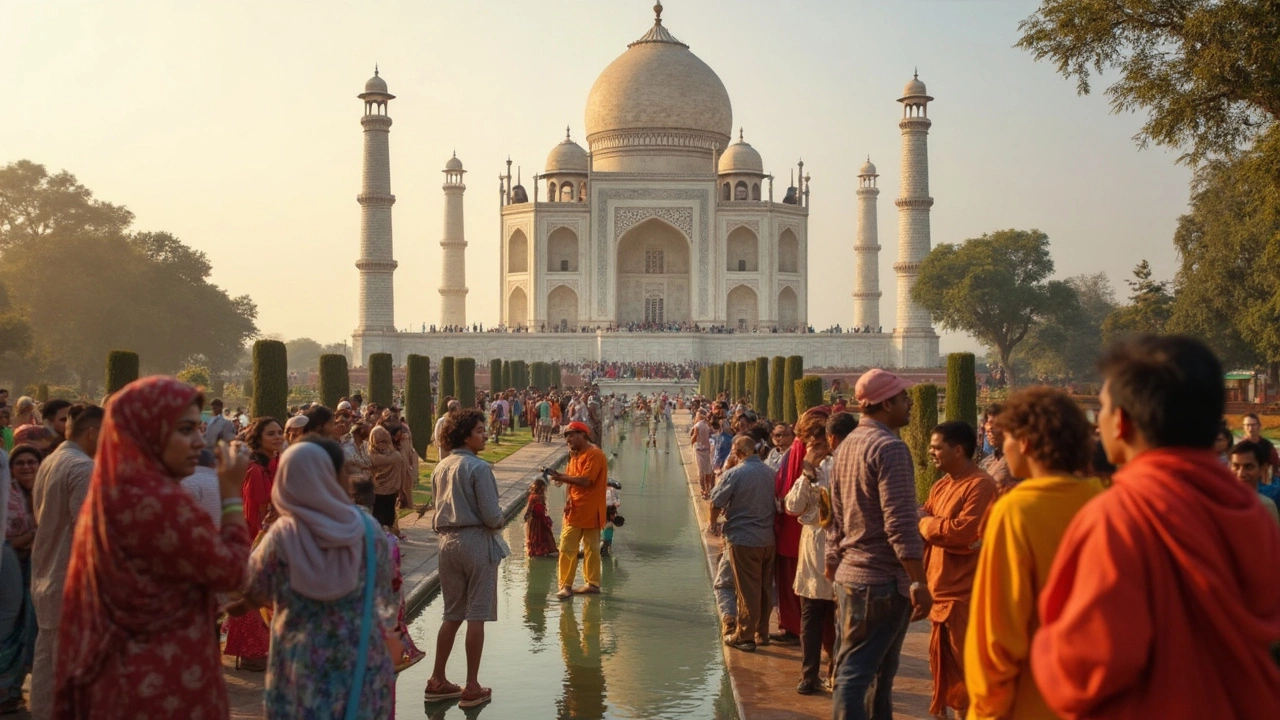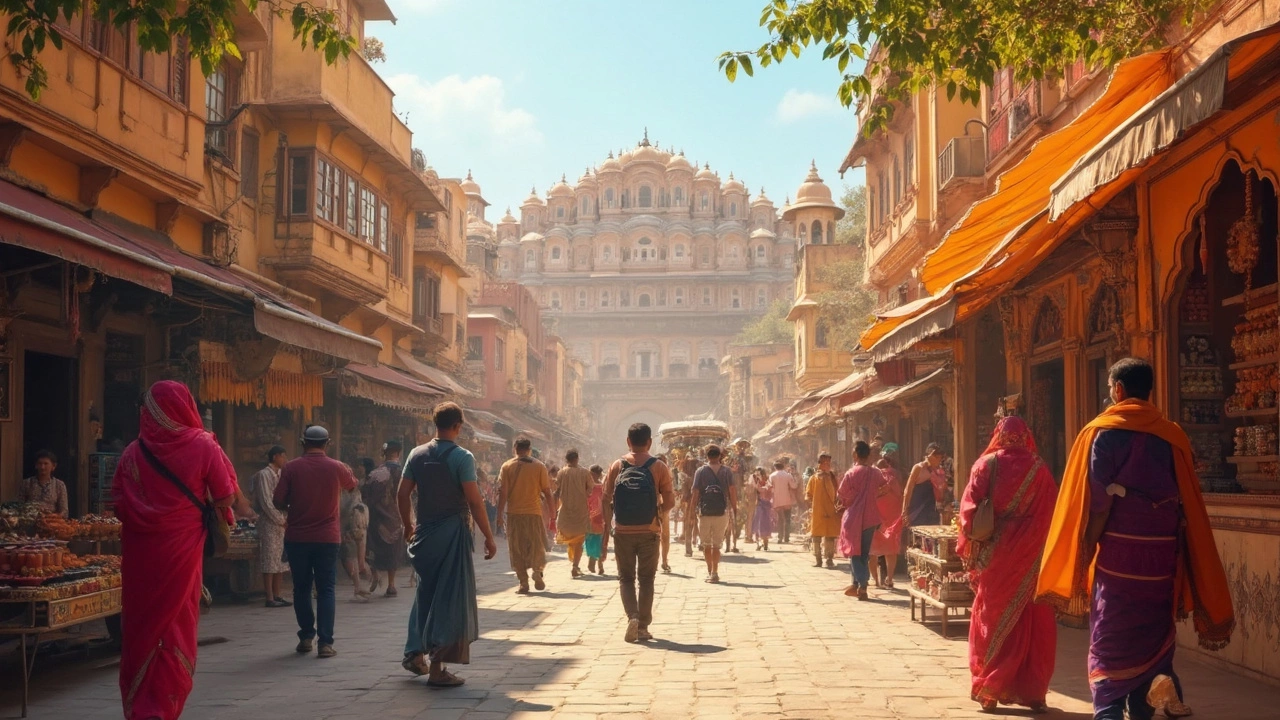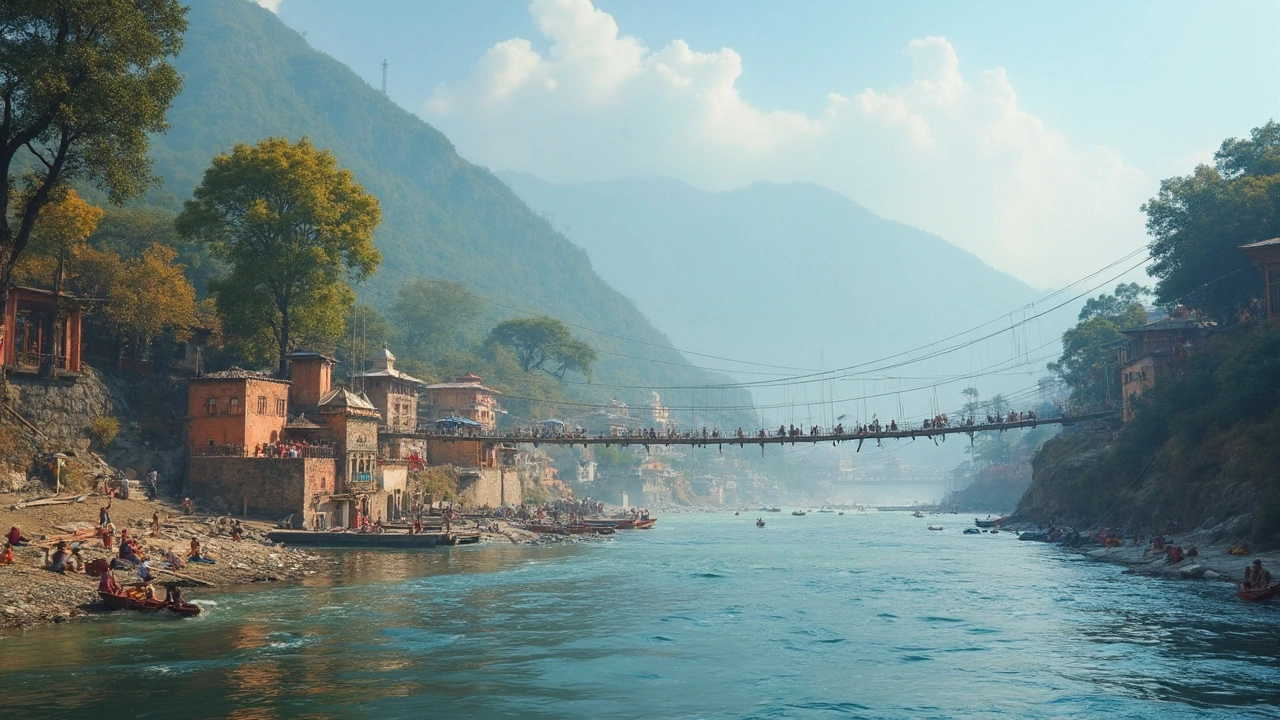North India Tourism: Which Part of India Attracts the Most Foreign Visitors?
 May, 6 2025
May, 6 2025
Ask any seasoned traveler where most foreigners land up in India, and the answer is usually the same: North India leads the pack, hands down. It's not just the number of centuries-old forts or the insane buzz of the local markets—there’s something about the raw energy in places like Delhi, Agra, and Jaipur that keeps people coming back. These cities make up what's famously called the Golden Triangle, and honestly, it’s the first stop for most first-timers flying in from abroad.
Tour operators aren’t shy about pushing North India at the top of their itineraries, and for good reason. You get to tick off the Taj Mahal (which, let’s face it, most people worldwide recognize instantly), marvel at enormous palaces in Jaipur painted in sunset pink, and walk the busy, spice-scented streets of Delhi’s old quarters. It’s like a crash course in Indian culture, history, and everyday chaos bundled into one region. And if you know where to look, there’s a ton more beyond the hit list on every postcard.
- The Main Magnet: Golden Triangle
- Hidden Gems Beyond the Triangle
- Why North India Wins with Foreign Travelers
- Need-to-Know Tips for Visitors
- Getting Around: Transport and Local Hacks
The Main Magnet: Golden Triangle
The Golden Triangle is hands down the superstar of north india tourism. If you're wondering where foreign visitors land first, this is it. It loops together three big hitters: Delhi, Agra, and Jaipur. Each city is about a 4-6 hour drive from the next, which keeps things pretty easy for travel newbies and groups.
Here's the breakdown:
- Delhi: India’s capital is where your journey usually starts. Besides being the international flight hub, Delhi packs in historic sites like the Red Fort, Humayun’s Tomb, and Qutub Minar. Plus, you get a wild mix of street food, shopping, and traditional culture.
- Agra: Let’s be real—everyone comes for the Taj Mahal. It's the headline act and one of the world’s most recognized landmarks. But Agra Fort and Fatehpur Sikri also give you glimpses of grand Mughal history. Don’t ignore the wild tuk-tuk rides or the local petha sweets either.
- Jaipur: Known as the Pink City, Jaipur shows off stunning forts like Amber, an actual working city palace, and dozens of colorful street bazaars. There’s also a bunch of quirky attractions like Jantar Mantar, an old-school observatory, and honeycomb-palace Hawa Mahal.
What makes the Golden Triangle click with so many foreign tourists? Three things: everything is relatively close by, all cities are absolutely packed with must-see sites, and the local travel infrastructure is decent. You can get between these cities by train, tourist bus, or private car without much hassle. Many travelers smash this loop in a week, and it covers a ton of ground fast.
If you’re the numbers type, check this out:
| City | Top Attraction | Annual Foreign Tourists (approx.) |
|---|---|---|
| Delhi | Red Fort, Qutub Minar | 2.35 million |
| Agra | Taj Mahal | 1.7 million |
| Jaipur | Amber Fort | 900,000 |
Tip: If you want to avoid the crowds, get to the Taj Mahal early morning or late afternoon. Weekdays are way less hectic than weekends. And for foodies—Delhi’s Chandni Chowk street eats and Jaipur’s lassiwalas are must-tries.
Hidden Gems Beyond the Triangle
Once you’ve checked off the big hitters like Delhi, Agra, and Jaipur, North India still has a lot more up its sleeve. Tons of travellers are starting to look for places that aren’t packed with photo-snapping crowds, and honestly, that’s where you start to find the magic.
Let’s talk about Varanasi. This is the oldest continually lived-in city on earth, right on the banks of the Ganges. Foreigners come for sunrise boat rides, wild street food, and those evening ceremonies where the whole river lights up with floating candles. If you’re interested in real-deal spirituality, this city isn’t just a box to tick—it’s a full-blown experience.
Further north, there’s Rishikesh and Haridwar, known as the yoga capitals of the world. Thanks to the Beatles showing up here in the ‘60s, Rishikesh has kept its rep with backpackers looking for meditation classes, bungee jumps, and rafting on the Ganges. Most north india tourism guides slot these in as must-see places, and you won’t find the laid-back vibe anywhere else.
Got a thing for the mountains? Head to Himachal Pradesh. While Shimla and Manali are on most people’s radar, places like Spiti Valley and Kasol feel completely different—cool weather, no crowds, and insane mountain views. In fact, a 2023 tourism department survey found that Kasol’s foreign visitors have doubled over five years, mostly because of the chill, backpacker scene.
Here’s a quick look at some less obvious—but seriously awesome—destinations beyond the Golden Triangle:
- Amritsar: Home to the Golden Temple. Free food at the temple’s kitchen feeds 100,000 people a day—yes, you read that right.
- Dharamshala: The seat of the Dalai Lama. Tibetan cafes, mountain treks, and peace and quiet.
- Jodhpur: The Blue City, where rooftop restaurants overlook giant forts.
- Pushkar: Hippie central. The world’s only Brahma temple and a legendary camel fair.
- Lucknow: Not so much on the tourist circuit but famous for food, old architecture, and some of the friendliest locals you’ll meet.
These spots don’t just add variety to the usual north india tourism plan—they give you bragging rights for seeing a side of India most don’t even know exists. Skip the queues, find places your friends haven’t heard of, and grab those stories you wouldn’t get anywhere else.

Why North India Wins with Foreign Travelers
No other region pulls in international crowds quite like North India. There are solid reasons for this, and they go way beyond just famous buildings. For starters, North India is where you'll find a collision of history, architecture, food, religion, and buzzing markets—all packed pretty close together, which makes it easy to cover a lot in just one trip.
The big showstopper is the Taj Mahal in Agra, drawing nearly 7 million visitors a year, including a serious portion from outside India. Throw in Jaipur’s Amber Fort and vibrant bazaars, or Delhi’s Red Fort and street food spots, and you’ve got a heady mix that’s tough for foreign travelers to resist. These cities also invest a lot in infrastructure—think cleaner airports, more hotels for every budget, and English signage, which isn’t always the norm elsewhere in India.
Festivals play a huge role too. Holi in Mathura or Diwali in Varanasi are world-famous, and plenty of tourists time their trips just to see these huge celebrations firsthand. It’s not just about watching from the sidelines—many visitors join the action, which makes their trips way more memorable.
Here’s a quick look comparing annual foreign tourist footfalls in some North Indian stars:
| City | Annual Foreign Visitors |
|---|---|
| Agra | 1.5 million |
| Delhi | 2.5 million |
| Jaipur | 800,000 |
Plus, adventure lovers love North India for its gateways to the Himalayas. Rishikesh’s yoga retreats, Leh’s trekking routes, or pushing up to Dharamshala for a taste of Tibetan culture—there’s something for everyone. Price tags are a bonus: traveling in North India can still be budget-friendly, especially compared to other famous destinations around the world.
Last thing? The stories people take home. Camel rides in Rajasthan, sunrise boat rides in Varanasi, cooking classes in Delhi—these aren’t your usual, bland vacation stories. There’s endless stuff to try, see, and eat here, which is why folks end up picking north india tourism over other regions almost every time.
Need-to-Know Tips for Visitors
If you’re serious about exploring north india tourism like a pro, some insider tips can save you a ton of hassle and make your trip a lot more fun. Here’s what you’ll thank yourself for knowing ahead of time.
- Weather is wild: Summers (April-June) can get brutally hot, especially in Delhi and Agra—think 40°C (104°F) or higher. Winters (December-February) get chilly, and fog can mess with flights and trains. The sweet spot is from October to March when the climate’s way more friendly for sightseeing.
- Dress smart: North India is more conservative than Goa or South India. Pack lightweight but modest clothes, cover your shoulders and knees if you’re visiting religious places, and keep a scarf or shawl handy, especially for women.
- Watch your tummy: Delhi belly is real. Stick to bottled water (ask for it sealed) and skip anything that looks like it’s been sitting out for hours. Street food is awesome, but start slow if your stomach isn’t used to spicy stuff. And always carry some hand sanitizer.
- Get a SIM card: Internet can be spotty. Grab a local SIM card with data at the airport or a big mobile store. You’ll need your passport and a photo. Jio and Airtel are solid choices for coverage in the most visited places.
- Bargain everywhere: Whether you’re in a market in Jaipur or catching a tuk-tuk in Agra, prices start high for tourists. Haggling is expected, not rude—just smile and keep it friendly.
- Book trains and attractions early: North India’s train system is an adventure in itself, but tickets, especially for popular spots like Varanasi, get snapped up weeks in advance. Same goes for the Taj Mahal—buy those tickets online to avoid huge lines.
Here’s a quick look at some stuff that trips up even experienced travelers:
| Common Issue | Simple Fix |
|---|---|
| ATM not working | Keep some cash, especially small bills—card machines can be unreliable in smaller towns. |
| Getting lost in Old Delhi | Pin your hotel on Google Maps and save it offline before you head out. |
| Language barriers | Most young people speak some English, but Google Translate’s Hindi download helps. |
If you keep these tips in mind, you’ll have way more good stories and a lot less drama. That’s the magic mix for enjoying the best north india tourism has to offer for foreigners.

Getting Around: Transport and Local Hacks
Navigating north india tourism can feel overwhelming, but the main routes connecting Delhi, Agra, and Jaipur are well-oiled machines. The most popular option? Trains. The Indian Railways network is huge, reliable for the most part, and a real-time saver for foreigners looking to cover lots of ground quickly. The Gatimaan and Shatabdi Express trains link the key Golden Triangle cities at high speed and comfort, with reserved seats and even onboard meals.
If trains sell out (they often do, especially last minute), buses are another solid option for stretching your budget. Government and private buses run regularly between major hubs—just remember that 'deluxe' might simply mean better than basic. For flexibility, many travelers choose trusted taxi services or car hires with a driver. Apps like Ola and Uber are widely used in Delhi and Jaipur, and you can always book a full-day cab for intercity travel.
| Mode | Average Cost (USD) | Travel Time (Delhi–Agra) |
|---|---|---|
| Train (Gatimaan Express) | 7–15 | 1 hr 40 min |
| Bus | 4–8 | 4–5 hrs |
| Private Taxi | 50–100 | 3–4 hrs |
In the cities themselves, rickshaws are everywhere. Auto-rickshaws and cycle-rickshaws are quick, cheap, and surprisingly maneuverable in heavy traffic. Just settle the price before hopping in, unless the driver actually runs the meter (rare but possible in well-policed zones). For an easy ride without bargaining, use the Uber or Ola app—it might cost a bit more than local rates, but the convenience is worth it for most first-time travelers.
- Always screenshot your train or bus ticket and save it offline—internet can get patchy.
- In bigger cities, metro systems are clean and very affordable. Delhi Metro even offers special tourist cards for unlimited rides over one or three days.
- If hopping city-to-city in a group, splitting the cost of a car plus driver can sometimes work out almost as cheap as train tickets, and way more flexible.
Here’s a quick heads up: The distances on maps often fool newcomers. What looks like an hour’s drive may turn into three, thanks to unpredictable traffic or roadworks. Pack snacks and water, especially if you’re going off the highway routes. And don’t be shy about asking locals for the best bus stop or platform—most folks will go out of their way to help a foreign visitor trying to enjoy north india tourism without a hitch.